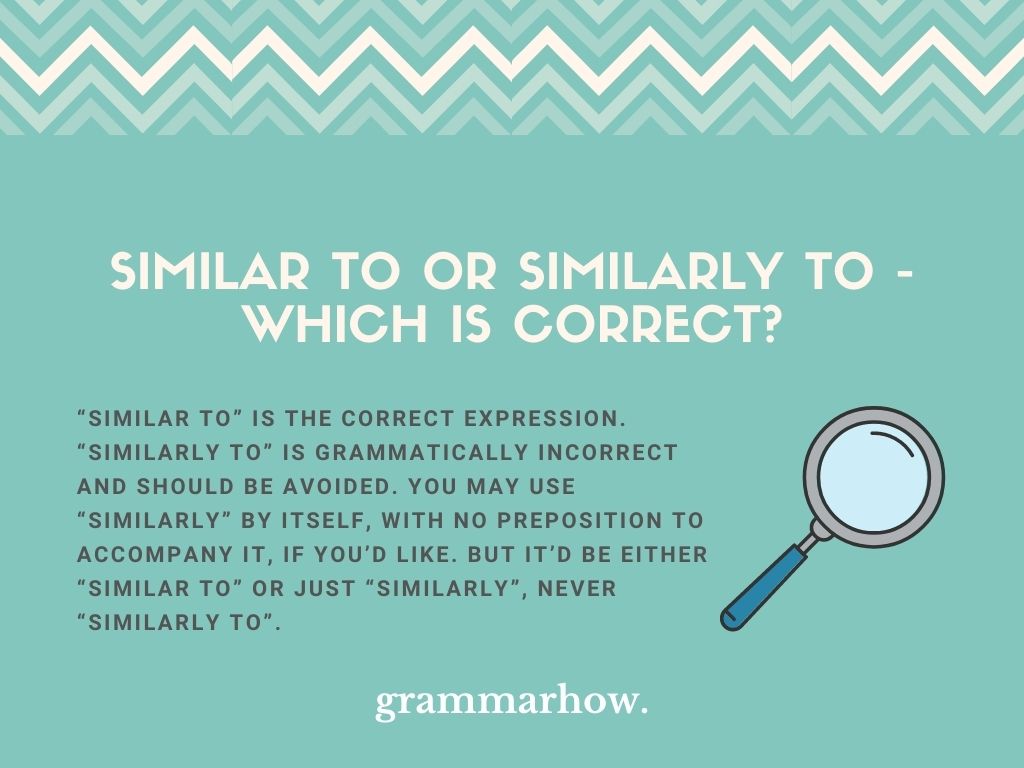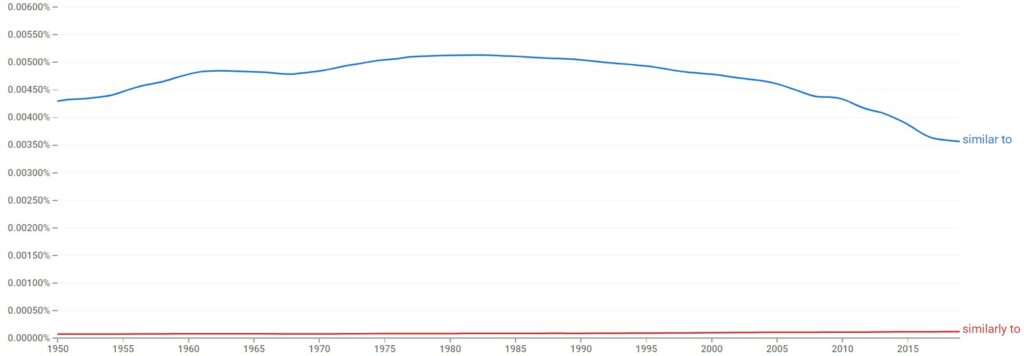When indicating a correlation, or pointing something kindred to another, how should we express ourselves: would it be correct to use “Similar To” or “Similarly To”?
Let’s find out which is the correct form, and how we can use them to make a point when comparing items or indicating similarities.
Similar To or Similarly To – Which Is Correct?
“Similar To” is the correct expression. “Similarly To” is grammatically incorrect and should be avoided. You may use “Similarly” by itself, with no preposition to accompany it, if you’d like. But it’d be either “Similar To” or just “Similarly”, never “Similarly To”.

Take a look at the examples below:
- The candy’s flavor was similar to raspberry.
- The candy’s flavor was similarly to raspberry. (incorrect)
- Similarly, the candy tasted like raspberry.
Notice that to use the word “Similarly” you sometimes need to change how the sentence is constructed. It’s not just about a small interchange.
Similar To
“Similar” means something that looks or is almost the same as another, but not quite the same. “Similar” items share features and keep some differences, as they’re not completely alike. “Similar To” is the expression used to indicate what is similar to what, in a given situation.
These are some examples of “Similar To” put to use:
- My political views are similar to my father’s.
- John needs a pair of shoes similar to yours. Where did you buy those?
- Clara’s personal style is similar to her sister’s.
- I’m searching for colleges with a similar background, to pursue my degree.
- The candidate is using tactics similar to the one he used before. It won’t work.
In every sentence, by using “Similar To” we indicate that one thing is somehow kindred another, that they share some level of resemblance.
Similarly To
“Similarly To” is a grammatically incorrect form, and should be avoided. You can use “Similarly” or “Similar To”, but the combination of “Similarly” and “To” doesn’t function well together.
This is how “Similarly” should be used in a sentence (as opposed to “Similarly To”):
- The twins were dressed similarly.
- Similarly, bikes should stop at the stop sign, just like any other means of transportation.
- The two books are similarly structured, but the authors don’t have the same point of view.
- The teams are similarly equipped, so it should be a fair match.
- My political views are similarly to my father’s. (incorrect)
- John needs a pair of shoes similarly to yours. (incorrect)
“Similarly” is a word that exists and can be used whenever you see it fit. Just keep in mind that “Similarly To” is not the correct way to use it.
Which Is Used the Most?
We know “Similarly To” is incorrect, but some people still use it anyway. Which form do you think pops up more often, the correct or the incorrect one? Let’s use the graph from Google Ngram Viewer below to find out.

As you can see, “Similar To” is used much more frequently than “Similarly To”. We believe this is the case simply because “Similarly To” is incorrect.
The usage of “Similar To” has remained fairly stable through the years, with some variations, but nothing of importance.
Final Thoughts
Whenever you need to indicate a similarity between two things, use the expression “Similar To”. As an alternative, depending on how your sentence is constructed, you may also use “Similarly”. However, never use “Similarly To” – this form is grammatically wrong, and you should avoid it.
You may also like: Should I Use Similar With, Similar To, Similar As, or Similar Like?

Martin holds a Master’s degree in Finance and International Business. He has six years of experience in professional communication with clients, executives, and colleagues. Furthermore, he has teaching experience from Aarhus University. Martin has been featured as an expert in communication and teaching on Forbes and Shopify. Read more about Martin here.
